Are group cycling classes a fitness quick win or a road to ruined legs?
We tried out a static cycling class to see if the benefits can cross over to outdoor cycling, too
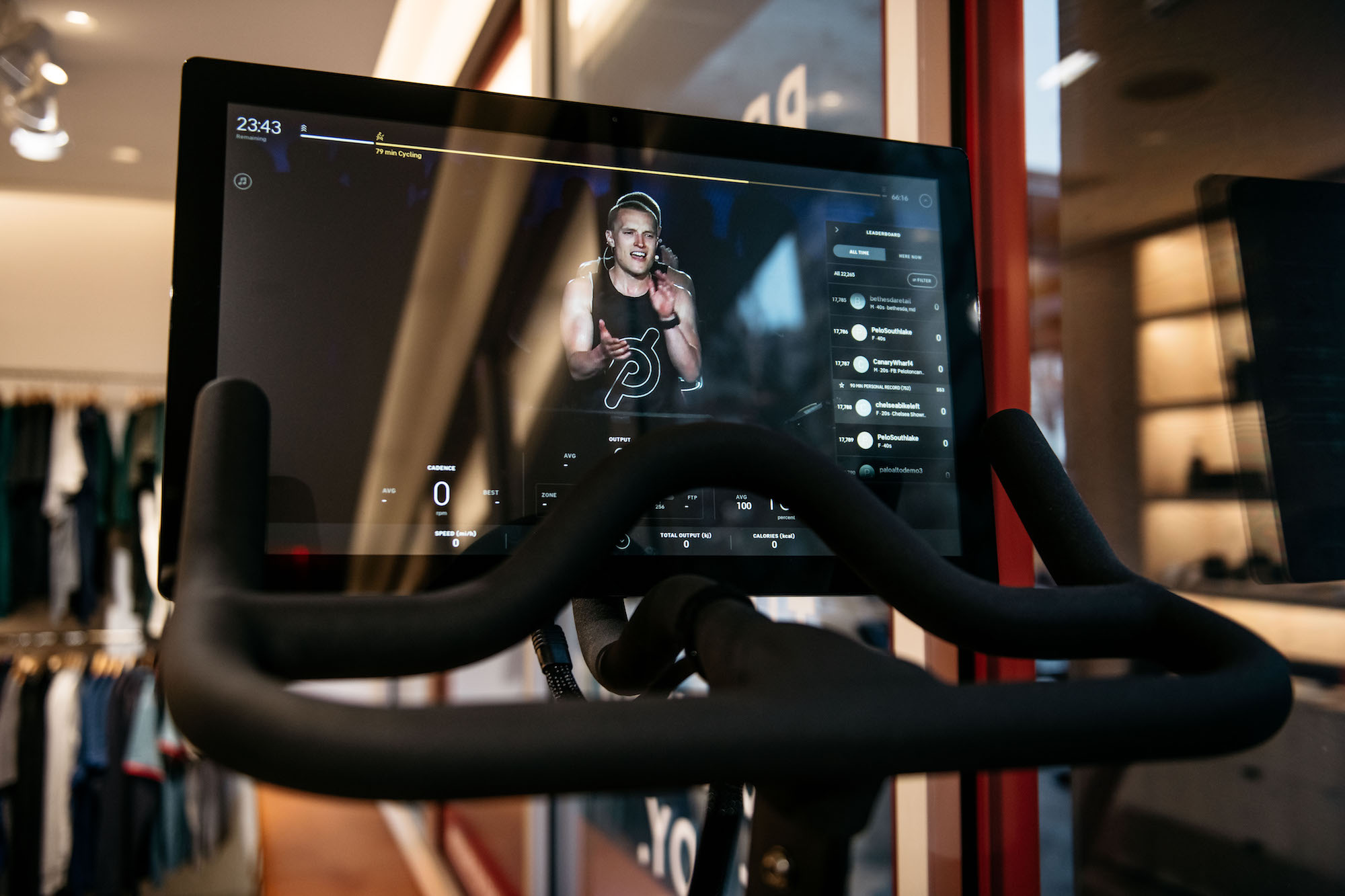
(Photo by Scott Heins/Getty Images)

Hands up if you think static, group cycling classes (think sessions held at gyms and at dedicated studios) bear no resemblance to cycling outside and have zero benefits for a real-life cyclist?
Having given it a go, I'll agree on the first point - traditional static cycling classes are nothing like cycling.
However, an exercise which strengthens many of the muscles we need on the bike but barely utilise as we pedal, and burns around 800 calories an hour, isn't something to be sniffed at.
Static cycling is big business and as such new studios open up every year, especially in busy cities where time efficiency is crucial to success (or survival).
How closely related the class is to outdoor cycling will come down to the instructor, but outside of the cycling-specific classes taught at dedicated spaces like Athlete Lab in London, most will differ tremendously from the turbo torture sessions we're used to.
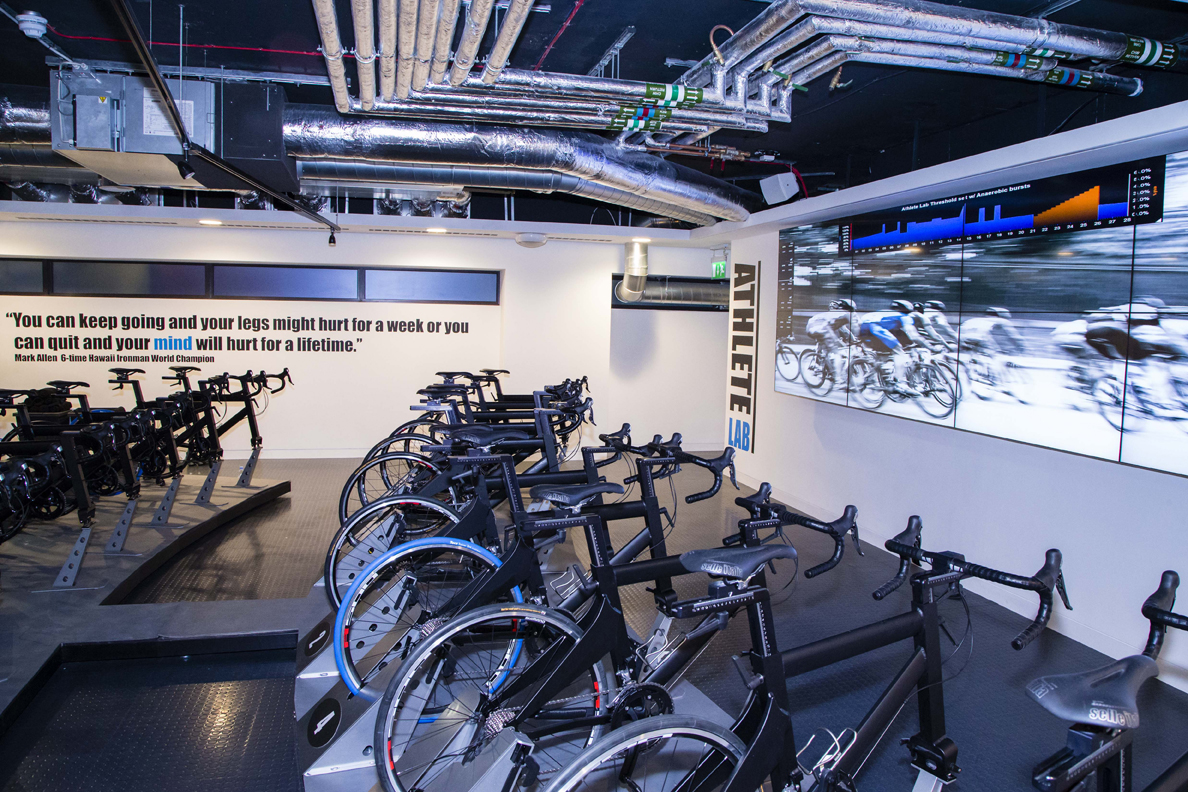
Dr Frances Mikuriya teaches static cycling, and TRX - a body weight-based strength and stretching tool - at Body Machine Performance Studio in Kensington, and explained: "For me, indoor cycling and outdoor cycling are two very different things. However, it can really benefit your outdoor cycling."
Mikuriya's founded the first private indoor cycling group in London, in 2004. Since then she's picked up a wealth of clients from various sports, including those who put the bike first.
The latest race content, interviews, features, reviews and expert buying guides, direct to your inbox!
"I have a lot of cyclists who come to train with us here. They realise it's very different, it's a very intense session, in one hour you can burn 800 to 1000 calories. Also, I do pretty much all the work off the saddle. That's very different from being outdoors, but dedicated bike riders - for whom cycling is their key sport - feel the benefits.
"One guy I train rides with a team, and he used to always be the weakest on the climbs, but after using these sessions, he's found he can now catch up with the team because his core got so much stronger - by which I mean mid-thigh up, the glutes, the obliques. A lot of people don't use those muscles, but if you do it'll make you faster on the hills and protect your back from injury."
"Some cyclists come in, and treat it like a road bike, crank up the resistance, and don't really follow the class - you can't have that mentality to act like it's outdoors because this is completely different. It's not a replication of an outdoor bike, but it really compliments it."
Static cycling instructor and GB age-group duathlete Sam McClary agreed, telling us: "Short sharp bursts of sprints and hill efforts interspersed with active recovery and longer intervals to test strength and endurance all help to push your lactic acid threshold, annihilate fat, burn calories and build muscle.
"Given the right instructor and the right set of tunes, you'll push yourself harder [in a class] than you do on the road.”
That said, the out the saddle work used at many studios will come as a shock to the system for a cyclist used to being unseated for short periods, so it's advised that those new to the discipline do portions of the class bum down until they've built up the strength required to stay upright for an hour.
Monkeying around
Mikuriya likes to finish her classes with a bit of monkeying around on the TRX bands upstairs - this can be targeted towards strength or stretching depending upon the goal.
"Cyclists who ride for hours and hours get really tight through the hip flexors, and it really is a problem, and on the TRX you can really open up. And we can do a lot of shoulder stretching to reverse the hunched position created by the bike and office work.
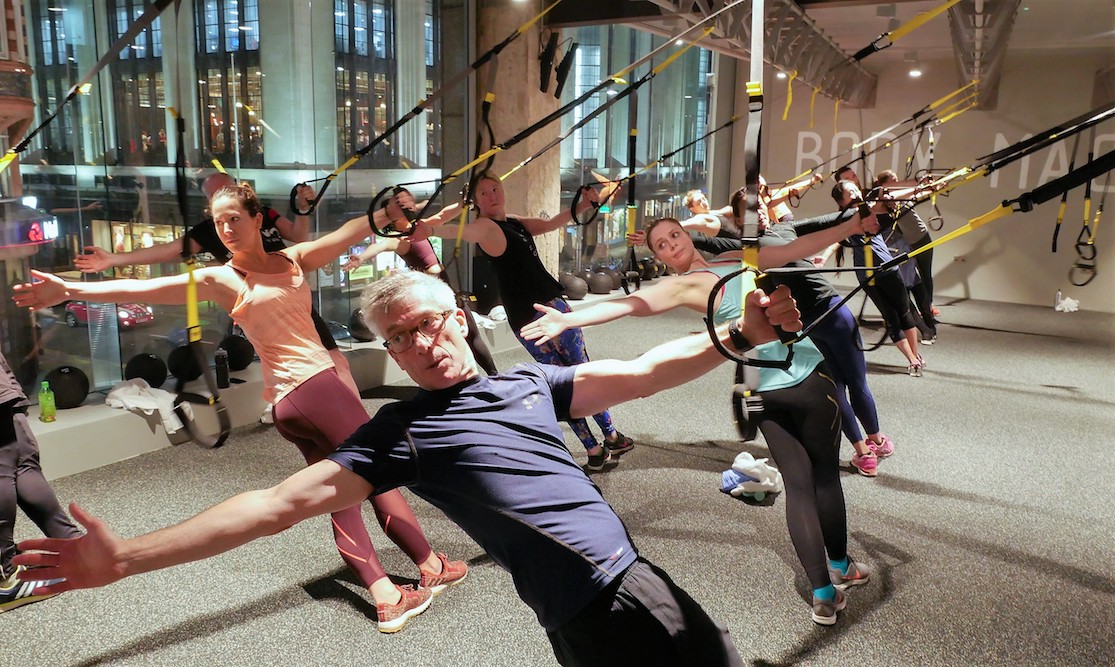
"It's excellent for strengthening core, glutes, hamstrings too. Some cyclists might find they have some imbalances between left leg and right leg, so this is excellent because once you start doing single-leg exercises, you will realise if your hips are shifted or you wobble on one leg, so it's really good for alignment and to improve power on the bike."
Putting a static cycling class to the test
Having been enlightened towards the benefits of static cycling of course I had to give it a go.
I was reassured when Mikuriya confirmed that there would be no mid-ride press-ups, figure eights or other 'entertainment' as per other studios, "how can you keep a strong core if you're throwing your hips around?" she had asked.
As a road, track and crit racer, I was a little less enamoured with the fact that most of the session would be completed with zero contact with the saddle. On the plus side, the bikes came fitted with 4iiii crank arm power meters, Look pedals and a lot of adjustability so at least I felt a hint of familiarity.
Within the first 10 minutes I'd already drafted a mental WhatsApp message to my coach, explaining that tomorrow's gym session was not going to happen, because my quads were screaming at me and the DOMS had begun before there was even time for the apparent delayed onset.
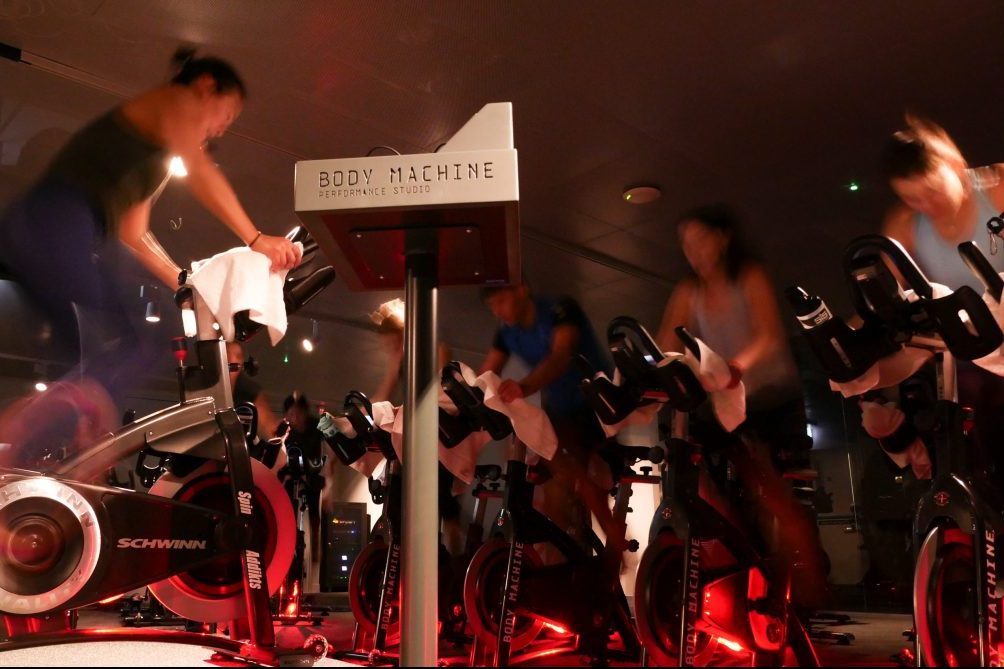
Leading the class Mikuriya passed on instructions based in RPM and resistance level, beginning with shorter forays into fast 'bursts' and ending with more resistance via five-minute climbing replications.
After 30 minutes, my heart rate had soared into the relentless mid 190s multiple times and I felt as though I was verging on a metamorphosis into a puddle of salty water.
Needless to say, it was with relief that I clambered off the bike, and with a new-found respect for those who do this on a regular basis.
The TRX class which followed was mainly focused around stretching, with a few strength exercises thrown in - the single-legged piston squad being a personal nemesis of mine which the straps gave me a fighting chance of performing.
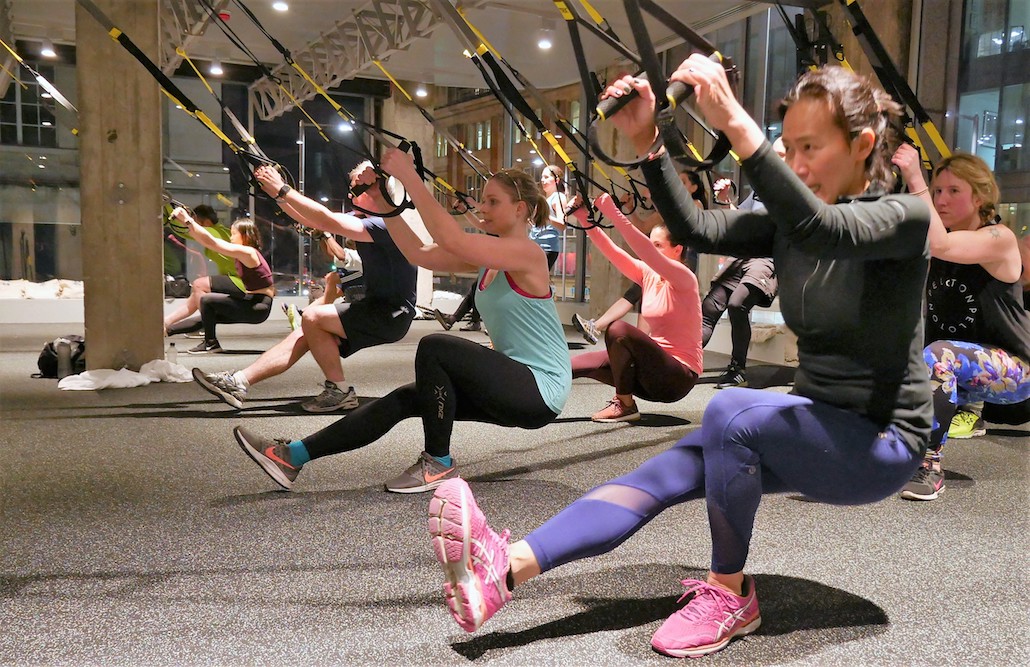
Static cycling, in the sense of a traditional class such as this, is absolutely not the same as outdoor cycling and performed without outdoor riding wouldn't be ideal for a bike racer. I also wouldn't advise sporadic classes, because the new muscles used will impact on the rest of your riding week. However, I can certainly see a place for a bi-weekly session, used to strengthen the core and work on leg speed, alongside normal routines on the turbo and outside.
Static cycling class basics: how do they work?
A static cycling class is a high-intensity cycling workout that generally takes place on a stationary machine with a heavy, weighted flywheel that is linked to the pedals.
The result is a fixed gear bike (like a track bike) – your legs are constantly moving and you have to apply pressure to slow them down. You can’t simply stop pedalling and that means that every second of the available time is put to good use.
>>> Indoor cycling apps compared: which is best for you?
Most classes last for around 45-60 minutes; it’s rarely necessary for them to be any longer and participants can expect to leave sweaty and with heavy legs. However, they can last longer, Body Machine sessions can keep going for as many as 90 minutes.
Nearly all classes will be led by an instructor who calls out intervals (when to pedal hard and when to slow it down) – and this person has a huge effect on the class.
A class that advertises itself as being designed to aid your outdoor cycling performance might be led by a qualified cycling coach who may focus the intervals on skills needed in a bike race – often based on power zones. In comparison, other classes like the one described above will place a greater importance on all-over conditioning. Both promise a thorough workout and it’s really down to personal preference.
Can anyone take part in a static cycling class?
The handy thing about these classes is that they allow riders of all abilities to push themselves as much as they like, in the same place. So an Olympic champion can train alongside a complete novice without either placing any impact on the other’s training.
Static cycling bikes have resistance dials – so a stronger cyclist can turn their dial right up to the max, whilst a beginner may want to be a bit more restrained. No one gets dropped and no one gets frustrated.
>>> Beginner’s guide to indoor cycling: five ways you can get your pedal fix inside
"Classes can also be modified for each individual as the resistance you add to your bike is linked to your own personal rate of perceived effort. Eight out of 10 may look very different for the new rider and seasoned cyclist but it will feel exactly the same for both riders,” McClary said.
Tips for your first static cycling class
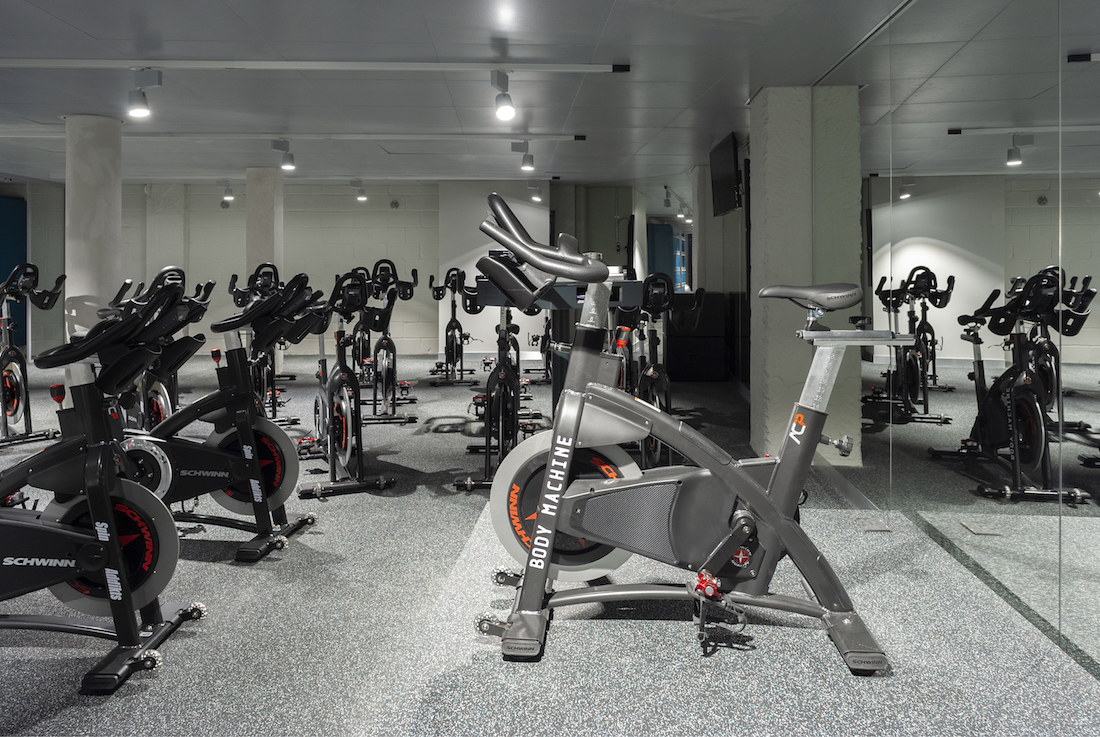
Going to give it a go? Here are a few tips to make sure you get the most out of your class...
Shop around
Classes vary dramatically. If you want a fun fitness vibe, look for one that focuses on the music and lights side of the show. If you're after specific race-related intervals, look for one led by a qualified cycling coach.
Get there early
Leave plenty of time to make sure you don't get saddled with the dodgy bike that everyone else knows has a useless resistance dial. You'll also want time to set your bike up to match your measurements and to swap the pedals if you're clipping in.
And take water, and a towel: It's going to get sweaty.
Be open-minded
Expect weights and 'tap backs': There will be some elements you wouldn't expect from a standard cycling class - be prepared to try something new, but know everything will be explained so you won't be left scratching your head.
Expect DOMS the next day
'Delayed onset muscle soreness' rears its head when you use muscles in a way they're not used to. You might be perfectly OK with riding 100 miles on the weekend, but that doesn't make you immune to muscle pain following your first class - plan an easy ride the following day to spin the legs out.
Keep the pedal stroke smooth
Riding a fixed gear bike can pay huge dividends in optimising your pedal stroke. The constant pedalling will naturally train your legs, but you can help the process by keeping a focus on the entire movement - both the downstroke and the oft forgotten upstroke.
Don't death-grip the handlebars
It's easy to get carried away during a hard interval, holding the handlebars with the kind of grip you'd apply to your top tube if the bike was at risk of falling off a cliff. But doing so takes away from the core strength element that you can gain from using your trunk muscles to keep yourself upright.
To get the position right, draw your stomach in and tense your pelvic floor muscles. Try to concentrate on your position wherever possible - especially when getting in and out of the saddle.
Michelle Arthurs-Brennan the Editor of Cycling Weekly website. An NCTJ qualified traditional journalist by trade, Michelle began her career working for local newspapers. She's worked within the cycling industry since 2012, and joined the Cycling Weekly team in 2017, having previously been Editor at Total Women's Cycling. Prior to welcoming her first daughter in 2022, Michelle raced on the road, track, and in time trials, and still rides as much as she can - albeit a fair proportion indoors, for now.
Michelle is on maternity leave from April 2025 until spring 2026.
